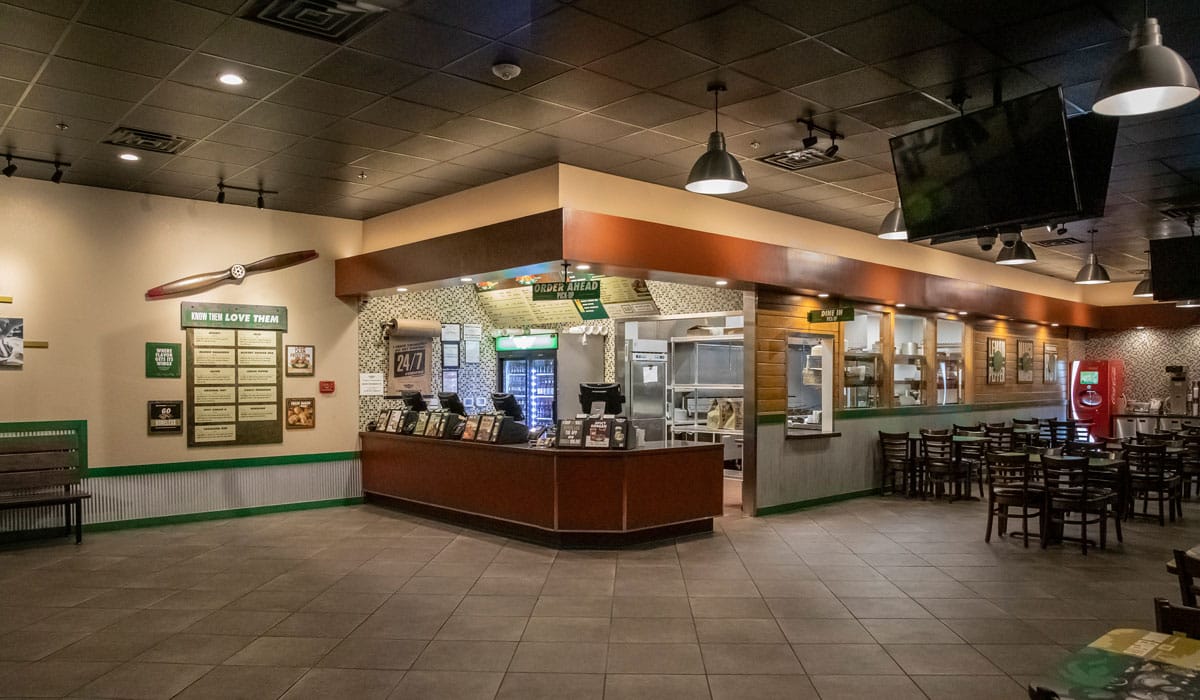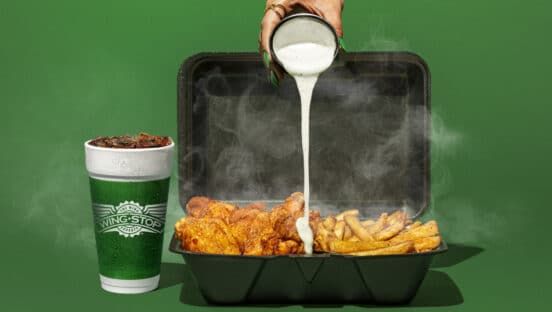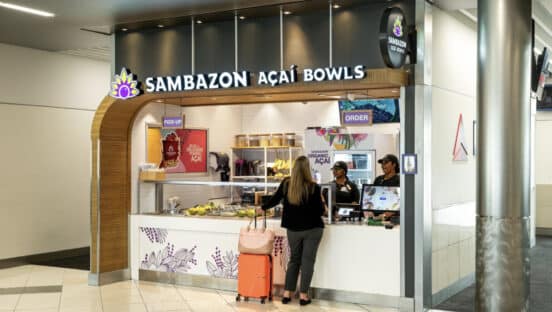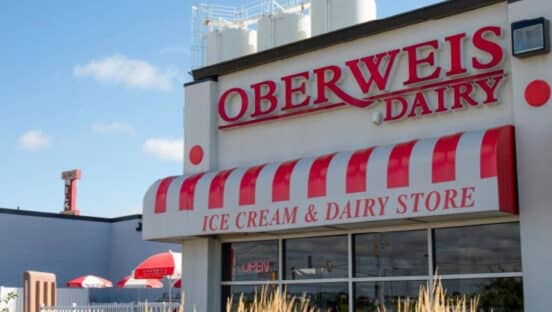In the second quarter, Wingstop experienced its worst same-store sales performance since the pandemic arrived nearly two and a half years ago.
The company expected comps to be flat, but in reality, they dropped 3.3 percent. In a three-month stretch, Wingstop navigated difficult sales comparisons because of stimulus money, pent-up demand around in-restaurant occasions, record-high inflation, spikes in gas prices, an unnecessary war in Ukraine, and deteriorating sentiment, particularly from the lower-end consumer.
With all that said, the shaky macroeconomic environment has done little to harm the confidence of CEO Michael Skipworth, who took over the brand this spring. History backs him up; Wingstop has achieved 18 straight years of positive same-store sales growth, meaning the brand has sorted through economic difficulties before—namely the Great Recession—and still come out on top. So why wouldn’t No. 19 be within reach?
“We have a proven playbook, one we began to deploy in the second quarter,” Skipworth said during the chain’s earnings call.
Wingstop is pulling a number of growth levers that should lead to transaction growth and bridge the awareness gap between it and more mature quick-service chains, the CEO said.
READ MORE: Wingstop’s COVID Journey Gets Bumpy, but Not Uncomfortable
The chain is leaning into value to recapture the lower-end consumer that began to pull away. Early into Q2, the fast casual launched a $15.99 boneless meal deal—20 boneless wings, four flavors, two dips, and a large fry—that’s mixing 7 percent. The brand is currently piloting another bundle that includes bone-in wings, boneless wings, and tenders as part of a triple meal deal. Wingstop is essentially passing down deflation to the customer. Compared to Q1, cost of sales declined 480 basis points, driven by an improved labor environment and the cost of bone-in wings dropping 19 percent year-over-year.
Skipworth said the company is a year ahead in terms of feeling historic inflation (i.e. record wing prices on the spot market in 2021), therefore it’s better positioned not to take price compared to peers.
Menu innovation is on the horizon, as well, with the Wingstop Chicken Sandwich ready for a national rollout in early September. This past spring, the brand started testing the product at more than 60 restaurants in four markets. The crispy chicken breast comes in all 11 of Wingstop’s classic wing flavors, topped with pickles and a buttery toasted bun. The test checked all the major boxes—mixed 4 percent, didn’t complicate operations, strengthened the lunch daypart, and showed incrementality. A combo meal, including fries, a drink, and a dip, will be available for $7.99, while the a la carte sandwich will cost $5.49.
Skipworth said the sandwich will be an opportunity to capture new consumers.
“We’ve heard over the years the concept of a veto vote where you’ve got a group and not everybody wants wings, and what we believe we saw in some of the consumer feedback during our market test was this chicken sandwich really helped us solve that veto vote,” the CEO said. “So we’re excited about what this can do for our business, not to mention, we think it’s an incredible product. From what we saw in the market test, the feedback from consumers was extremely encouraging.”
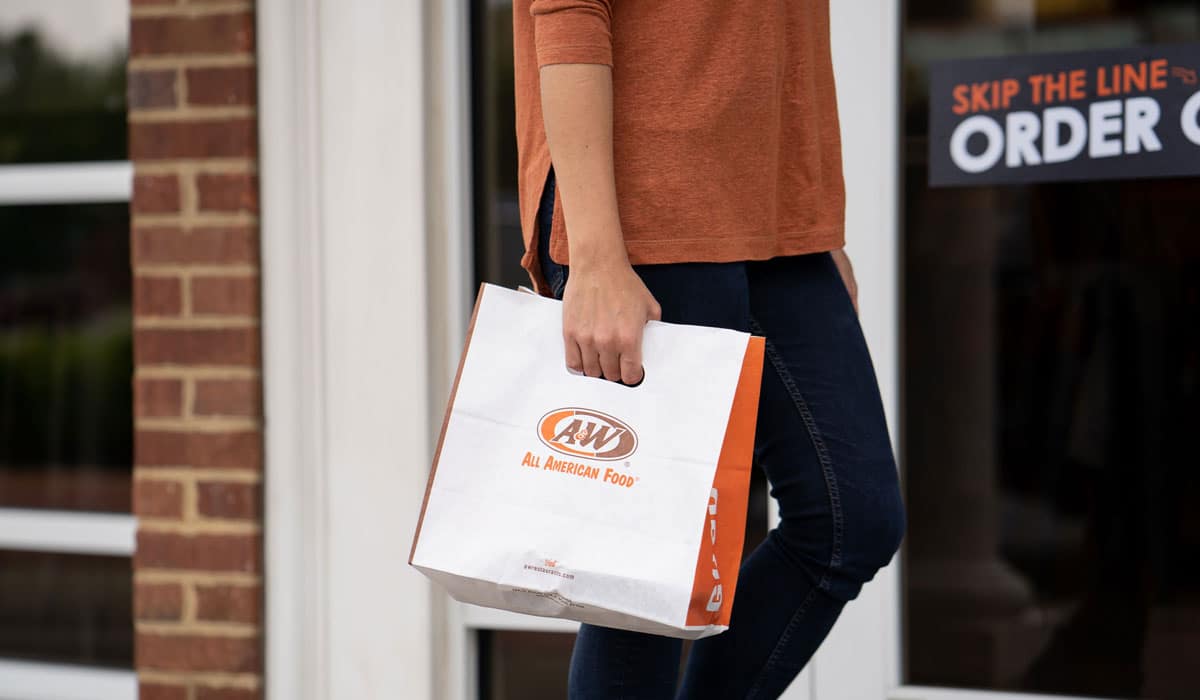
Guest acquisition will also come via the third-party delivery market. After working exclusively with DoorDash, Wingstop decided to onboard Uber Eats, a partnership that’s been active for about two weeks. Although it’s early days, Skipworth said results are at or above expectations, which is particularly impressive considering the company made the move without advertising support. The chief executive indicated there may be opportunities to add more third-party aggregators, but there are no immediate plans to do so.
To capture the rise of customers willing to dine out, the fast casual reopened all dining rooms and saw the channel build organically. By the end of Q2, dine-in mixed 5 percent; prior to COVID, the business represented about 20 percent of sales. Despite the increase in dine-in—which usually comes with fewer people per order in comparison to digital—average check remains elevated in the $22 range.
Also, in an effort to drive greater brand awareness, there are plans to increase advertising spend by more than 35 percent during the second half of the year. This comes after Wingstop decided to consolidate local ad spending into the national fund, which has grown from fewer than $60 million in 2019 to more than $120 million in 2022. Because of the strategy, the brand has an “always on” advertising presence, as opposed to two 12-week stretches in the first and back part of the calendar year. Wingstop now has enough funds for more premium placements.
“I think you’ll see us show up in a much bigger way this fall, NFL as an example,” Skipworth said. “All that muscle and firepower is going to work to support the chicken sandwich, as example.”
Operating challenges haven’t discouraged franchise development either. Wingstop opened a net of 67 restaurants in the second quarter, surpassing Q1’s record, and the pipeline of sold commitments is stronger than it was a year ago. Stores are earning $1.3 million in their first year of business, up from the mid-$900,000 range just three years ago.
The chain finished the quarter with 1,858 units systemwide, including 1,639 in the U.S. and 219 internationally. In Q2, Wingstop opened its first store in Canada, where it has room for 150 to 200 restaurants. The fast casual is also eyeing major growth in South Korea (the first location is scheduled to open in early 2023), which could potentially hold 200-250 units.
The concept upped its 2022 guidance from 220-plus net new stores to 220-235, a mark that will smash last year’s record-breaking 193 net new locations. The long-term goal is to reach 7,000 restaurants worldwide.
Skipworth said the brand is in constant dialogue with franchise partners, and the conversations have been “extremely positive.” He added that operators aren’t focused on comp trends in the second quarter; instead, they’re elated about AUVs growing to $1.6 million, a $400,000 increase on average in the past two years, and the fact that food costs are falling in a suitable range.
“As they look at the P&L today, as they look at the cash flow they’re generating, it’s creating a lot of excitement,” Skipworth said. “A lot of excitement for development.”
Although comps declined in the second quarter, the cadence improved throughout. For 2022, Wingstop expects U.S. same-store sales growth in the low single digits. The brand earned $2.5 billion in systemwide sales in the trailing 12 months. Of that amount, $1.5 billion is digital, or a 60 percent mix, supported by a database of 30 million users.

